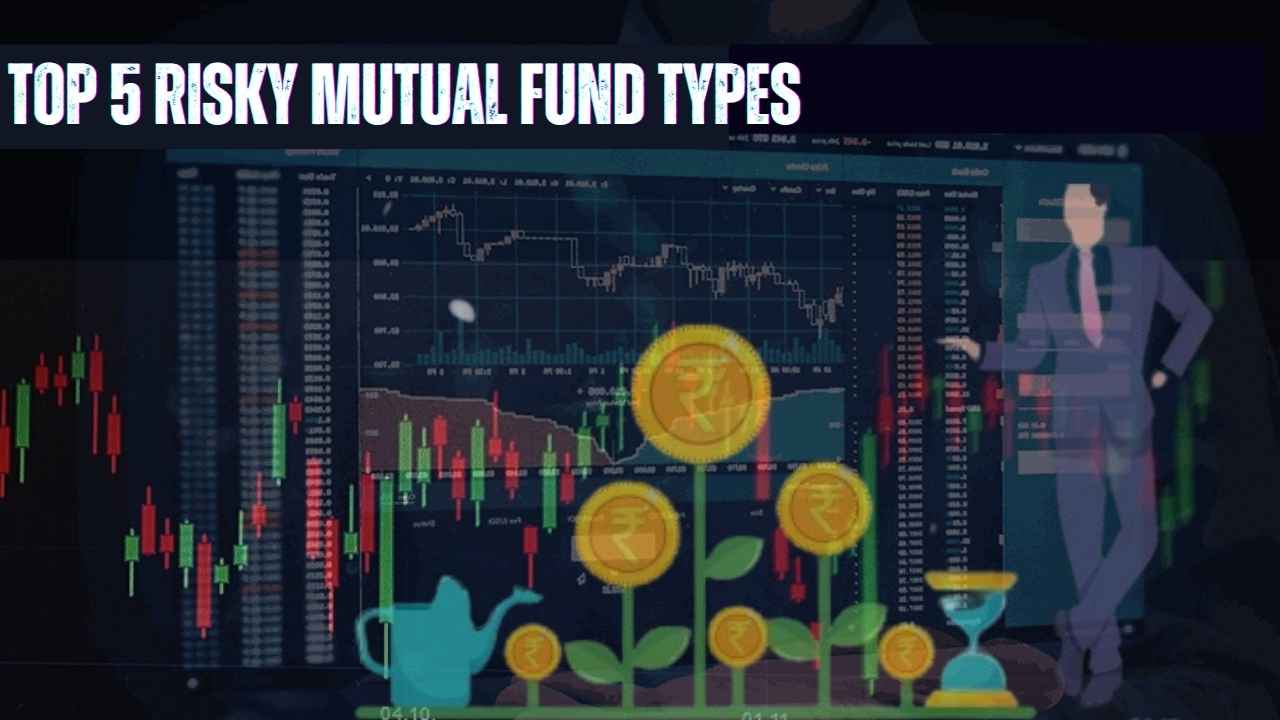Risky Mutual Funds That Investors Can Avoid- We’ve all heard that “Mutual funds are a good form of investment,” but that’s quite a general statement. Before you invest, it’s important to learn which mutual fund schemes you need to avoid. Avoiding too risky schemes will make your portfolio’s overall return and stability better by default.
In this article, we’re going to mention five mutual fund categories that new and old investors both would do well to avoid or approach with caution.
Top 5 Risky Mutual Fund Types

| Fund Type | Why It’s Risky |
|---|---|
| 1. Balanced Hybrid Funds | Taxed as debt → higher capital gains tax; equity allocation varies widely; can hide volatility in small/mid-caps under an “equity” label |
| 2. Fund of Funds (FoF) | Double layer of expense ratios; additional management fees; tax on redemption (both STCG & LTCG), reducing net returns |
| 3. Sector/Thematic Funds | Concentrated bets on one industry; performance swings with sector cycles; high correlation among holdings amplifies losses when that sector underperforms |
| 4. Small-Cap Funds | Invests in <₹500 Cr companies → extreme price volatility; benchmark sensitivity; big drawdowns in market downturns; only for aggressive, long-term risk takers |
| 5. Credit-Risk Debt Funds | Buys low-rated corporate bonds; vulnerable to downgrades and defaults; can suffer capital loss if underlying issuers’ ratings fall; for medium-high risk debt investors only |
1. Balanced Hybrid Funds
Funds that mix equity (40–60%) and debt (40–60%) in a single portfolio to provide “balanced” returns.
Why to avoid or be cautious:
- Tax Inefficiency: With ≤ 65% in equity, they’re taxed as debt schemes—20% LTCG with indexation versus 10% above ₹1 L in equity.
- Hidden Volatility: Equity portion may overweight small/mid-caps, increasing ups and downs under a “balanced” label.
- Unclear Risk Profile: Diverse equity/debt mixes can make it hard to gauge true risk.
2. Fund of Funds (FoF)
Mutual Funds, which are investing in other MFs (equity, debt, or hedge funds) and not investing in stocks/bonds directly.
Why to avoid or be cautious:
- High Expense Ratios: You pay fees at two levels—underlying funds + FoF management fees—eroding returns.
- Complex Taxation: Redemption triggers STCG or LTCG based on holding period, with no tax benefit on dividends.
- Layered Costs & Complexity: Extra layer of fund research and rebalancing adds cost without clear alpha.
3. Sector/Thematic Funds
Equity funds that invest ≥ 80% of assets in one industry (pharma, banking, tech, etc.).
Why to avoid or be cautious:
- Lack of Diversification: All eggs in one sector’s basket amplify risk if that sector cools off.
- Cyclical Swings: Sector performance is tied to economic cycles—downturns can inflict sharp losses.
- High Correlation: Holdings move together, offering little buffer in bear markets.
4. Small-Cap Funds
Funds that invest ≥ 80% in small-capitalization stocks (below the top 250 by market cap).
Why to avoid or be cautious:
- Extreme Volatility: Small caps can swing 20–30% in a week; large drawdowns possible during corrections.
- Benchmark Sensitivity: Heavily influenced by a few stocks, leading to large NAV fluctuations.
- Longer Recovery: Bear-market losses can take years to recover. Only for aggressive investors with 7–10 year horizons.
5. Credit-Risk Debt Funds
Debt funds that invest in lower-rated corporate bonds (AA and below) in search of better yields.
Why to avoid or be cautious:
- Default/Downgrade Risk: If an issuer’s rating falls, NAV takes a hit; missed interest payments can erode capital.
- Liquidity Concerns: In a crisis, low-rated bonds may be hard to sell without steep discounts.
- Suitability: Allocated only to medium-high risk portfolios; not appropriate for conservative investors.
Conclusion
Not all mutual funds are alike. By steering clear of these five riskiest categories—Balanced Hybrid Funds, Fund of Funds, Sector Funds, Small-Cap Funds, and Credit-Risk Debt Funds—you can minimize your portfolio’s unnecessary volatility and tax drag. Instead, invest in well-diversified, cost-effective schemes that suit your risk appetite and investment horizon. Remember: your best wealth creation tools are a well-defined strategy and long-term perspective.
Learn More:











Fdsfd you are enjoying
Hii